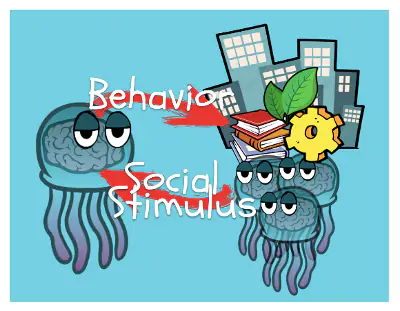Bias and Noise Change Perceptual Processes
How can bias and noise (in Daniel Kahneman's Idea) change our perceptual processes?

Bias and Noise Change Perceptual Processes - Jackson Cionek
Bias and noise, as conceptualized in Daniel Kahneman's work, can have a significant impact on our perceptual processes and ultimately influence the way we interpret and understand the world around us. Here's how bias and noise can change our perceptual processes:
Bias:
Selective Attention: Bias can lead us to selectively pay attention to certain aspects of our environment while ignoring others. This means we might focus on information that confirms our preexisting beliefs or expectations, filtering out contradictory information.
Confirmation Bias: This bias causes us to seek out and give more weight to information that confirms what we already believe, reinforcing our existing perceptions and preventing us from considering alternative viewpoints.
Availability Heuristic: This bias makes us rely on information that is easily accessible or readily available in our memory. If certain information or examples come to mind more easily, we might give them undue weight in our perception of reality.
Representativeness Heuristic: This bias leads us to make judgments based on stereotypes or prototypes, which can lead to overgeneralizations and distortions of reality.
Noise:
Inconsistent Interpretations: Noise can result in different individuals or even the same individual interpreting the same information in inconsistent ways. This inconsistency can lead to confusion and conflicting perceptions of reality.
Variance in Decision-Making: Noise in decision-making processes can lead to varying outcomes even when individuals are presented with the same information and facing the same choices. This can make it challenging to predict how different people might react to a given situation.
Random Fluctuations: Noise can introduce random fluctuations in our judgments and decisions, causing us to perceive patterns or trends that don't actually exist.
Unreliable Impressions: Noise can make our impressions of people, situations, or events less reliable, as they might be influenced by temporary factors such as mood or distractions.
Both bias and noise can lead to distorted perceptions and misinterpretations of reality. Bias reinforces our existing beliefs and prevents us from considering alternative perspectives, while noise introduces inconsistency and randomness into our judgments. These cognitive phenomena highlight the limitations of human perception and decision-making processes.
Understanding the role of bias and noise in shaping our perceptions can lead to more informed and critical thinking. It underscores the importance of being aware of our cognitive biases, seeking diverse sources of information, and striving for consistency in decision-making processes to mitigate the effects of bias and noise on our perceptions of reality.















